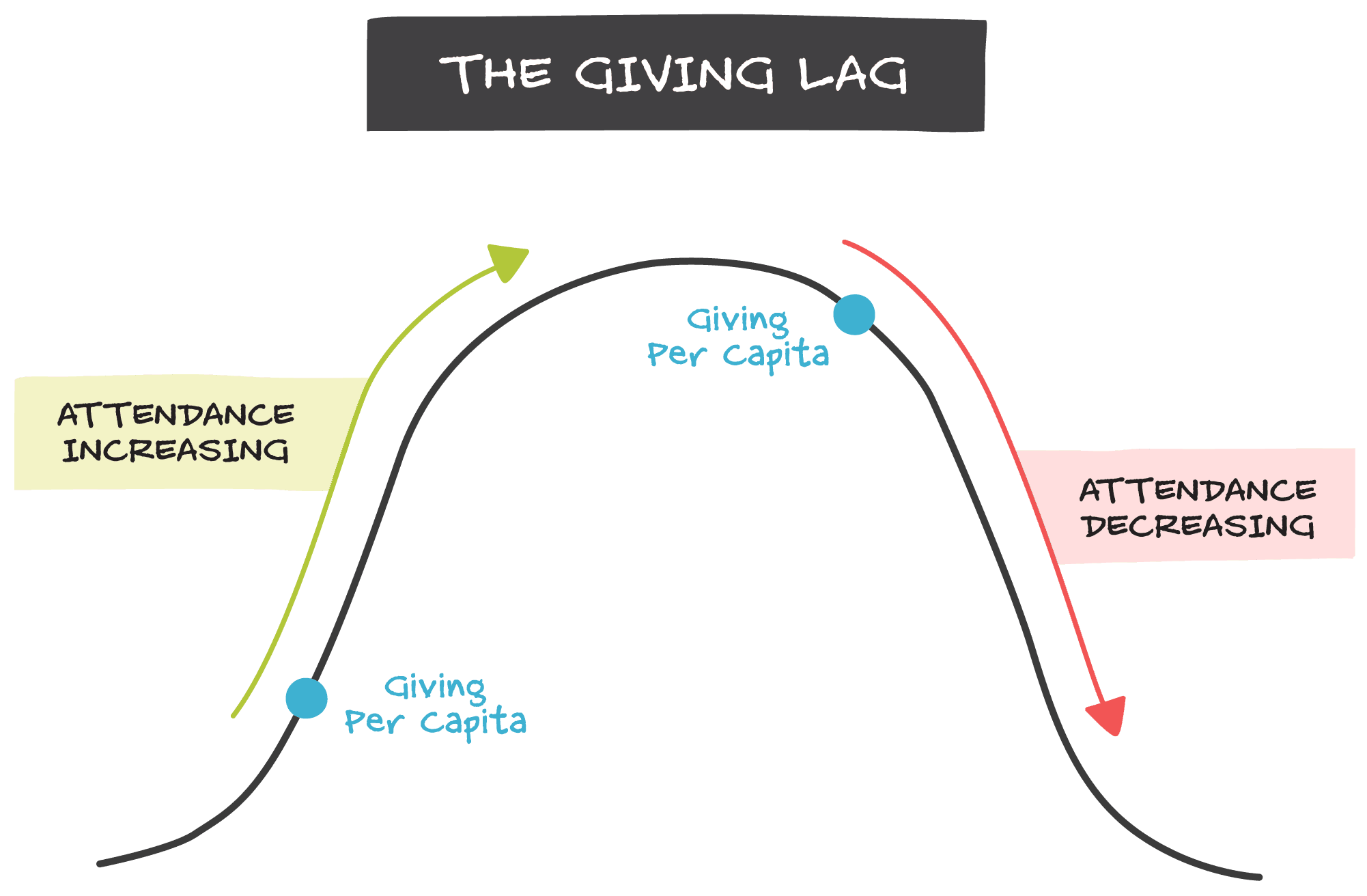This article was initially written by Tony Morgan. Tony passed away in 2024, leaving behind a legacy of thought leadership, innovation, and a deep commitment to helping churches thrive. We continue to share his work in his honor.
Have you ever noticed the innovation, focus and intentionality of churches when they first start?
In the beginning, just about any leader can make a decision and it’s very easy to get the ball moving in the right direction. Right, wrong and even confusing strategies are made and executed because sitting still is not an option.
During this time, it’s interesting to note that the attendance growth typically exceeds giving growth. There is a giving lag because it takes time for new believers to start making financial contributions to the church’s vision.
As the new believers become fully devoted followers of Christ, the financial growth begins catching up with the numerical growth. When this happens, subtle changes can be noticed. They start out small, but new habits quickly form. The increased finances give churches the confidence to hire new staff members in hopes of further expanding the numerical attendance.
Before, sitting still was not an option, now churches start taking root. Once a necessity, change is now an inconvenience. In fact, it almost becomes agonizing because it threatens the status quo. As necessary changes become obvious, many churches simply avoid the warning sings and don’t make any changes until they absolutely have to.
What does this mean?

Churches often feel safe because money hasn’t stopped coming in, even as attendance has slowed or begins declining.
But guess what? Giving per capita can actually be highest when a church is in decline. Sometimes churches think they are safe when they actually are not. The giving lag is working in reverse to how it operated in the early days.
In Small Is The New Big, Seth Godin shares how Kodak spent years denying, ignoring and evading the reality of digital photography and the impact it would eventually have on the film business. Profits were fine, everything seemed wonderful until digital cameras caught on. Suddenly the lag kicked in.
Winston Churchill once said, “There is no worse mistake in leadership than to hold out false hopes soon to be swept away.” Great organizations make changes when there isn’t yet an emergency.
Watch out for the lag. Willingness to embrace change is a key difference between great organizations (churches) and those that are willing to settle for mediocrity and eventually become obsolete.
Read more about signs a church is moving into “Maintenance Mode” in The Unstuck Church: Equipping Churches to Experience Sustained Health.








Leave a Reply